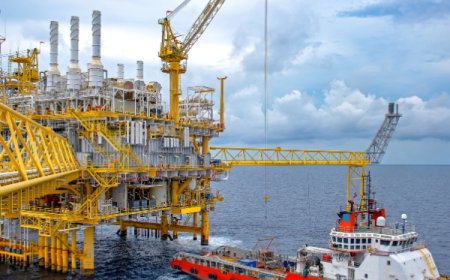10 Essential Navy Current Affairs for 2025
Explore the 10 essential navy current affairs for 2025 that are reshaping maritime strategy, technology, and security Stay updated with TheVeza for the most significant developments in naval defense and global maritime trends.

In the rapidly evolving domain of naval defense, 2025 emerges as a pivotal year, marked by transformative changes, technological leaps, and strategic alliances. Nations across the globe are refocusing on maritime power to secure their interests in international waters, bolster national security, and assert dominance. TheVeza presents 10 Essential Navy Current Affairs for 2025, highlighting the most significant developments every defense enthusiast, policymaker, and strategist should be aware of.
1. Indo-Pacific Strategy: Reinforced Naval Presence
The Indo-Pacific region continues to be a geopolitical hotspot in 2025. Naval powers like the U.S., India, Japan, and Australia have intensified joint maritime exercises under frameworks like QUAD to counterbalance Chinas growing naval footprint. This reorientation has led to a sharp increase in patrolling, surveillance missions, and naval base expansions across key chokepoints such as the Strait of Malacca and the South China Sea.
2. Green Navies: Sustainable Naval Technologies Take Center Stage
Environmental considerations are now integral to defense planning. Navies around the world are transitioning to hybrid-electric propulsion systems, investing in biofuel research, and developing eco-friendly vessels to reduce their carbon footprint. The Royal Navys new EcoDestroyer project and the U.S. Navys sustainable fleet initiatives set a precedent for a greener maritime future.
3. AI & Autonomous Systems Revolutionize Naval Warfare
Artificial intelligence is reshaping naval operations. From predictive maintenance of warships to unmanned underwater drones conducting reconnaissance, the navy's reliance on AI has grown significantly. In 2025, several countries unveiled AI-driven autonomous frigates and submersibles capable of independent decision-making during missions marking a new era of digital warfare.
4. Cybersecurity at Sea: The New Defense Frontier
With increased digitization comes vulnerability. Cybersecurity has become a top priority for naval commands. The past year witnessed several attempted cyber intrusions targeting naval communication systems. In response, naval forces have created specialized cyber-defense fleets, employing ethical hackers and AI firewalls to protect critical infrastructure from invisible threats.
5. AUKUS Pact Gains Momentum
The trilateral security pact between Australia, the United Kingdom, and the United States AUKUS took major strides in 2025. Not only did it pave the way for the deployment of nuclear-powered submarines in Australian waters, but it also led to deeper collaboration in intelligence sharing, quantum technology, and defense innovation, shifting the strategic balance in the Indo-Pacific.
6. Naval Space Surveillance Integration
The line between sea and space is blurring. Several naval operations now incorporate satellite and space-based monitoring systems for enhanced maritime domain awareness. The U.S. Navys SeaWatch-SatNet and Indias Mission SagarNet are prime examples of leveraging orbital technology to detect threats, track vessels, and ensure real-time maritime surveillance.
7. Rising Naval Budgets & Fleet Modernization
Countries are pumping significant funds into naval defense. Nations like China, India, and Brazil have ramped up their naval budgets to modernize aging fleets, invest in aircraft carriers, and enhance shipbuilding capabilities. In 2025, over 35 new warships and submarines were commissioned globally, reflecting the worlds pivot toward maritime supremacy.
8. Women in the Navy: Breaking the Waves
2025 celebrates a historic rise in female representation in naval forces. From commanding warships to serving in elite marine units, women are breaking barriers and leading from the front. The Indian Navys appointment of its first female fleet commander and the U.S. Navys gender-neutral submariner policy mark major milestones in this inclusive transformation.
9. Humanitarian Naval Missions & Climate Crisis Response
Navies are now vital responders to global crises. Whether it's providing disaster relief during floods or delivering aid during pandemics, the navys role is evolving beyond traditional defense. The Philippine Navys Operation Bayanihan and the U.S. Navys Pacific Partnership 2025 showcased the humanitarian arm of maritime forces amid increasing climate disasters.
10. The Arctic Race: New Naval Routes and Rivalries
Melting polar ice has opened up new naval frontiers. The Arctic region is witnessing unprecedented activity as countries race to claim territory and navigate the Northern Sea Route. Russia, Norway, the U.S., and China have deployed icebreakers and armed patrols, leading to new geopolitical tension and a shift in naval deployment strategies.
Why These Navy Current Affairs Matter
The navy current affairs 2025 reflect a world in transformation where maritime power is central to global influence, innovation, and security. These developments are not just strategic headlines; they are indicators of a broader shift in how nations perceive the oceans as arenas of cooperation, conflict, and change.
At TheVeza, we believe staying informed is the first step toward understanding the tides of tomorrow. Whether you're in defense, research, or simply curious about global affairs, these 10 updates serve as an essential compass for navigating the future of naval dominance.
Conclusion
From the icy waters of the Arctic to the contested shores of the Indo-Pacific, 2025 is a landmark year in naval history. With breakthroughs in AI, sustainability, and geopolitical alliances, the navy's evolving role is clear: its no longer just about ships and submarines its about shaping the course of global events. Stay ahead of the wave with TheVeza.





























